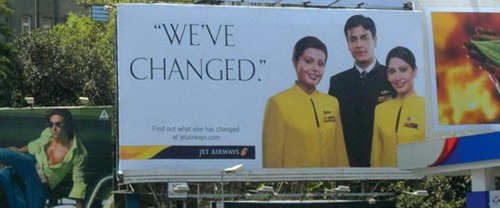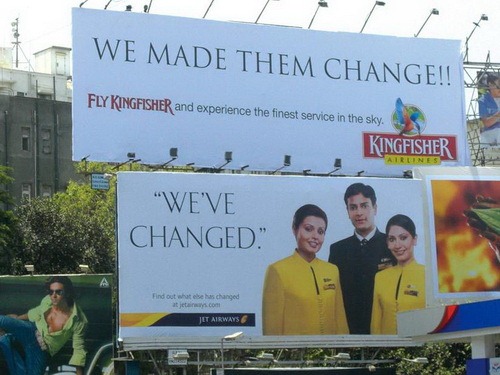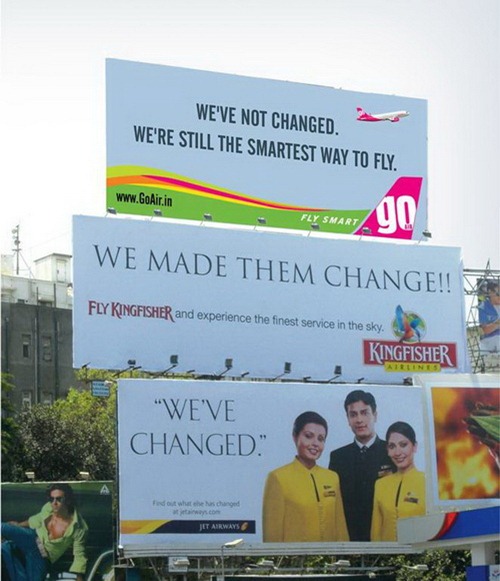Competitive Advertising – Creating controversy to get Maximum Eyeballs!!
Coke and Pepsi
Jet Airways, Kingfisher and Go Air
Audi, BMW and Subaru
HUL and P&G
What do you think is common between them other than them being companies from the same industry?
All of them have at some point or the other engaged in what we call today as COMPETITIVE ADVERTISING! So what is it?
According to the dictionary, it is defined as –
A commonly used type of advertising that communicates the unique benefits of a product, differentiating it from the competition.
In management jargon, it is about how well one positions a product based on the competitive advantage of it. But today it is becoming more of a sabotage or hijack against other brands as is shown by the above examples


 [source]
[source]
The biggest question which comes to one’s mind is the reason companies engage in such kind of advertising gimmicks. Wouldn’t it be controversial or is controversy the sole reason they are created – that is generating maximum eyeballs at all costs?
- The biggest and most important reason is to generate attention and attract the largest number of viewers
- The challenger mentality in any brand
- So when can a brand move to this level of advertising?
- In the initial stage of the advertising campaign to make the competitors sit up and take notice
- A brand may sometimes make certain claims about how they are better than their competitors which may be bizarre according to another brand and it may jump into the fray to counter them
- A creative way to show that the competitor’s claims are nonsense. Eg: Pepsi’s statement – Nothing official about it!
But it’s not all hunky dory. There are a lot of downsides to this form of advertising. Many a time as in the case of Dove and Pantene, competitive advertising leads to a situation wherein the brands start talking to each other rather than the audience. People didn’t understand the concept of the “mystery shampoo” and “being number 1”.
Using this strategy as a long–term one is also a recipe for total disaster. It can be only used as a pit stop and nothing more.
In the end, as one says
“Everyone is there in the business of advertising to make the customers buy their products and not to entertain.” And in the end if that doesn’t happen, then there is no point of such advertising campaigns.
Do you think following such a strategy is really useful for companies to get noticed?

See, qsn is not getting noticed….Which brand in the world wants to be noticed and hated? It's got to be blind then. Being the Indian Youth I would say, I would respect a brand that got out if a trap as this with a clever n witty blow back to the attack n also get emotionally attached wid it forever but probably boycott n ahte one tht started it, n also make all my frnds n contacts leave tht brand!
An interesting form of parasitic marketing…. good one…
Hey interesting observation :P ;)..Something which even I didn’t notice. . Nonetheless its for sure an eye catching ad :) :)
I just loved the Ad of Jet, Kingfisher and Go but if you look at the 2nd and the 3rd picture carefully, you would know that this is not a real picture of hoarding Ad. Count the number of lights on top of the 2nd picture over kingfisher Ad and check the same in the 3rd picture, you will see a difference, also check the length of the light rod on top.